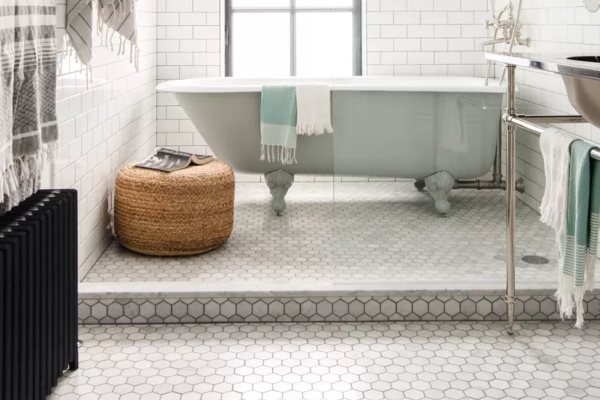Painting walls and cabinets is a cost-effective way to refresh the appearance of your home. However, certain items should be left untouched. Identifying these items can prevent wasted time and money on DIY painting projects.
We consulted home experts to provide guidance on which household items and fixtures to avoid painting. Their insights will help you make informed decisions and avoid future painting mishaps.
9 Things Not to Paint at Home
Bathtubs
One of the things not to paint at home is a bathtub. Replacing a bathtub can be costly, especially if the reason is purely cosmetic. Many people may consider painting their existing bathtub as a more affordable alternative. However, this is a decision that should be reconsidered.
According to interior designer Anaïs Chaumien, painting a bathtub is a mistake due to the constant exposure to water. The moisture can cause the paint to peel over time, leading to a less appealing appearance and even the potential for paint particles to contaminate the water.
Also, Read 10 Things That Make Your Home Look Messier!
Faucets
Painting your faucet is a poor choice if you want to revamp your bathroom or kitchen. Not only does it look unprofessional and dated, but it also can damage the faucet’s finish and functionality. Additionally, paint is prone to chipping, peeling, and fading, especially in a high-moisture environment like a bathroom or kitchen. Instead of painting, consider other options like replacing the faucet entirely or using faucet covers.
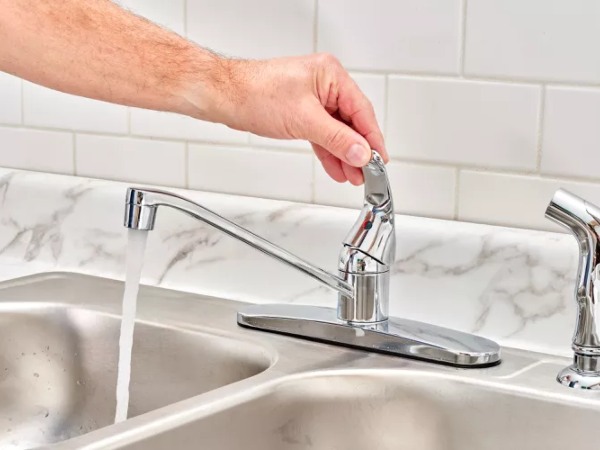
“Due to the frequency faucets are used, and how often they meet water, it’s recommended to never paint them,” says Gary McCoy, a store manager at Lowe’s.
Tile and Tile Backsplash
Painting tile or tile backsplash is generally not recommended. While some paints may adhere to tile, many do not, leading to a poor finish and potential damage. Both interior designer Anaïs Chaumien and home improvement expert McCoy emphasize the challenges of painting tile.
McCoy explains that tile backsplash is a difficult surface to paint due to its non-paint-adhesive composition. Exposure to heat and moisture, common in kitchens, can cause the paint to chip rapidly if it’s not specifically designed for tile application.
Electrical Appliances
Painting kitchen appliances is generally not recommended. While it might seem like a fun and creative way to personalize your kitchen, the results are often disappointing.
McCoy advises against painting appliances because they are typically not made of materials that adhere well to paint. This means the paint is unlikely to stick to the surface, leading to peeling, chipping, and a messy appearance.
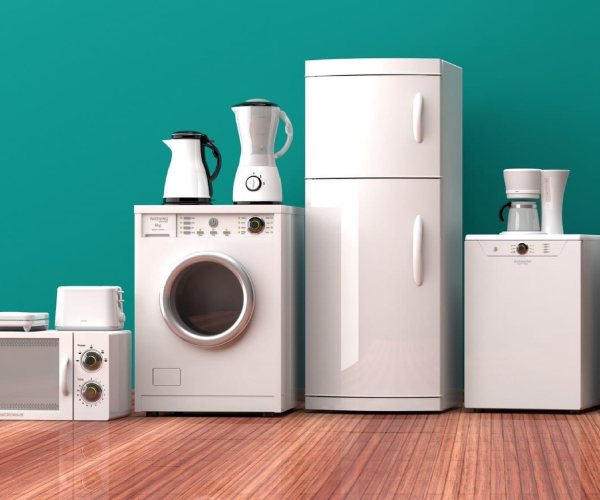
Instead of painting, consider purchasing appliances in the desired colors or using appliance covers to achieve a similar aesthetic.
Hardwood Floors
Painting hardwood floors is a quick way to permanently damage them. While it might seem like a creative way to change their appearance, the paint can harm the natural wood.
Interior designer Anaïs Chaumien advises homeowners to highlight the beauty of their hardwood floors. Instead of painting, consider using a stain that enhances the natural color and grain. Alternatively, you can cover the floors with a large area rug that won’t damage the wood and still provide a stylish touch.
Remember, hardwood floors are a valuable asset to your home, and it’s important to maintain their integrity and beauty.
Dishware
Painting dishware is a dangerous practice. While it might seem like a fun and creative way to personalize your tableware, the chemicals in traditional paint can be harmful to your health. McCoy warns that consuming food or drinks from painted dishes can lead to illness or toxicity.
Furthermore, dishes and cookware are subjected to high heat and water pressure during cleaning and use. These conditions can cause the paint to chip, flake, and contaminate your food.
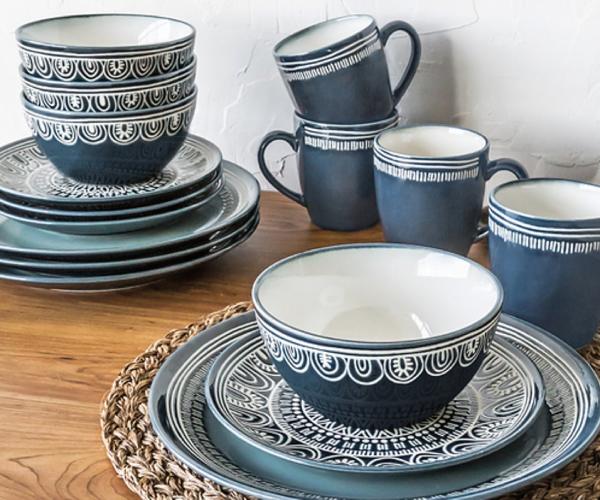
If you’re looking to add a touch of personality to your dishware, consider other options like using stickers or stencils that are designed for safe use on tableware.
Hardware
Painting knobs, pulls, and hinges is generally not recommended. While it might seem like a quick and easy way to update their appearance, the results are often disappointing.
McCoy explains that these items are typically made of non-porous materials, which means they don’t absorb paint well. This can lead to the paint chipping, peeling, and looking unprofessional.
Instead of painting, consider replacing these hardware elements with new ones. There are many affordable and stylish options available that can instantly transform the look of your cabinets, doors, and drawers.
Leather and Upholstered Furniture
Painting leather and other upholstery materials is a task best left to professionals. While there are experts trained in the proper techniques and use of specialized paints, inexperienced DIYers should avoid attempting it.
McCoy warns that improperly painting these materials can cause irreparable damage. The changes are often permanent, making it difficult to restore the furniture to its original state.
If you’re determined to paint your furniture, it’s highly recommended to consult with an experienced professional who can provide guidance and ensure a quality result.
Antiques
Many vintage or antique items have a distinctive aesthetic that doesn’t align with modern design trends. This unique quality is often the primary reason people seek them out. However, painting these items can be counterproductive.
Spraying paint over a classic item can obscure its unique details and diminish its value. The original character and charm that make it desirable are lost in the process. If you’re drawn to vintage or antique pieces, it’s generally advisable to appreciate and preserve their original appearance rather than altering them.
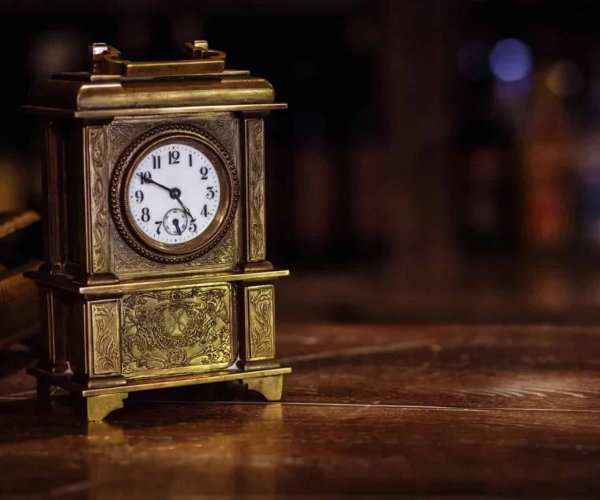
According to Ryan Ratkowski, the unique historical look and patina of an item are often its most attractive features. Covering them up can detract from their value.
“Once painted, their historical value and charm can be lost,” Ratkowski says. “Instead of painting, consider restoring or conservatively cleaning these pieces,” he says.
FAQs
Q: Can I paint old furniture at home?
A: Painting wooden furniture is a versatile and budget-friendly approach to achieving a cohesive color scheme in your home. Whether you’re revitalizing an existing piece or upcycling a flea market find, paint can transform the look and feel of your furniture.
Not only does painting offer a creative outlet, but it’s also an excellent way to utilize any leftover wood paint you may have on hand. This practical solution allows you to repurpose materials and avoid unnecessary waste.
Q: How does paint damage leather?
A: Painting leather can be a delicate process, and applying thick layers of paint can lead to cracking and damage as the leather flexes. It’s important to apply the paint in thin, even coats to allow for proper absorption and prevent cracking.
If you find it difficult to apply the first coat of paint, diluting water-based acrylic paint with an equal amount of water can help improve its absorption. This diluted mixture can be applied more evenly and may help prevent the paint from pooling or cracking.
Also, Read Power Washing 101: Frequency and Benefits Every Homeowner Should Know
